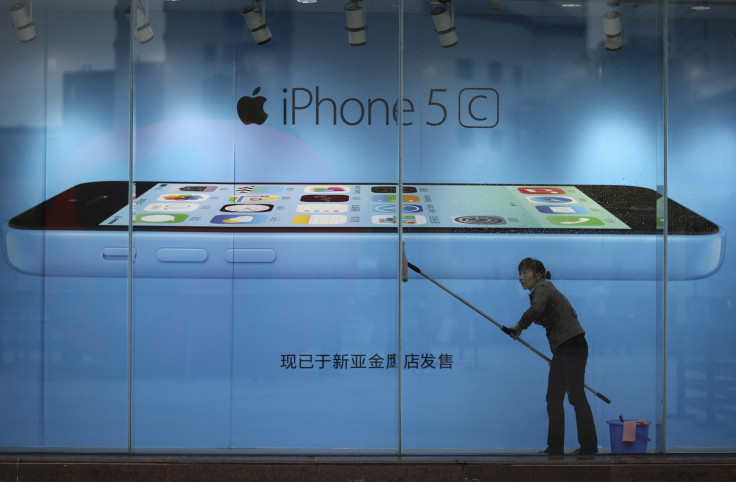Apple Inc. (Nasdaq:AAPL) Q2 Earnings Report: Revenue Up $2 Billion, iPhone Sales Up, iPad Sales Down

Apple Inc. (Nasdaq:AAPL) had a record-breaking second quarter as international partnerships and iPhone sales boomed. The Cupertino, Calif., company’s launch of an 8GB iPhone 5c in certain international markets in mid-March coupled with the lower priced iPhone 4s, made China and other international markets 66 percent of all iPhone sales in Q2. Apple CEO Tim Cook cited the company’s “incredible ecosystem and loyal customer base” for the smartphone market share growth in both emerging and standard markets.
“We’re very proud of our quarterly results, especially our strong iPhone sales and record revenue from services,” Cook said. “We’re eagerly looking forward to introducing more new products and services that only Apple could bring to market.”
Apple posted a $2 billion gain year-over-year in the second quarter, grossing $45.6 billion in revenue from $43.6 billion in the second quarter of 2013. The tech giant reported $10.2 billion in net profits for the quarter ending in March, an increase from the $9 billion expected by analysts and up $700 million year-over-year. Earnings per share, which benefited from the capital return program, came in at $11.62 diluted share, up year-over-year by $1.53.
This is well above the estimated $10.15 that analysts had predicted. Just after the earnings were released, the after-hours stock price climbed 7.8 percent.
“We generated $13.5 billion in cash flow from operations and returned almost $21 billion in cash to shareholders through dividends and share repurchases during the March quarter,” Apple CFO Peter Oppenheimer said. “That brings cumulative payments under our capital return program to $66 billion.”
While the iPhone soared in the second quarter, the iPad plummeted 16 percent year-over-year. Wall Street analysts were projecting close to 19 million units sold in Q2, but Apple only sold 16.4 million. Cook, however, was quick to clarify that the drop was merely a trick of numbers, claiming a change in channel inventory was to blame. Cook explained that in the second quarter of last year, Apple increased iPad channel inventory, but the company reduced it this year. Apple ended Q1 2014 with a surplus of iPad Minis, which had to be shipped in the second quarter.
Cook was also eager to tout the reception of the iPad.
“After we launched the first iPad,” Cook said, “we’ve sold 210 million” in four years. That is twice as many iPhones in the same timeframe and seven times as many iPods.
The iPad currently has a 46 percent market share, which includes tablets and the like that Apple doesn’t necessarily believe compete. Additionally, according to Cook, the iPad has an “unheard of” 98 percent customer satisfaction rating. “Every 90 days isn’t always going to be great, but the trend is great,” Cook said. “I am very bullish on the iPad.”
Apple announced Wednesday that it is bolstering its capital return program, raising the cap to $130 billion by December 2015, as it brought in $21 billion back to shareholders in the last quarter. This is the second time in two years that Apple has increased dividends on its capital returns programs.
Cook skirted mentioning any new products or acquisitions stating that Apple wasn’t ready to “pull the curtain string” yet. However, he did define a corporate mentality on acquisitions and product releases, saying that Apple isn’t interested in being the first to market but rather in bringing the best.
“Customer’s don’t care a lot about first,” Cook said. “They want great, insanely great.”
© Copyright IBTimes 2024. All rights reserved.




















